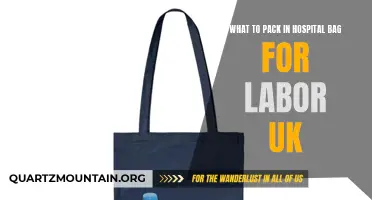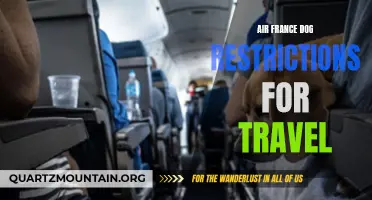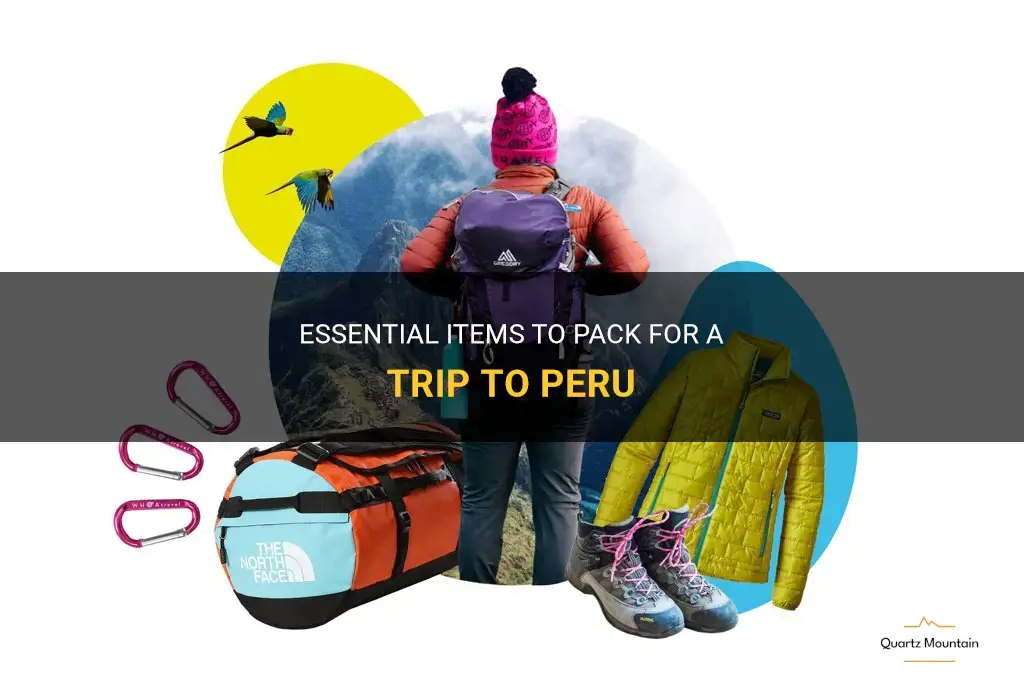
Peru is a captivating country that offers travelers a plethora of exciting adventures, from exploring the ancient ruins of Machu Picchu to navigating the mighty Amazon rainforest. However, in order to make the most of your trip and ensure a smooth journey, it is essential to pack the right items. Whether you're planning a trek to the Andes or a cultural immersion in the bustling streets of Lima, this guide will help you pack the essential items for your trip to Peru. So grab your backpack and get ready for an unforgettable adventure in this vibrant South American nation!
| Characteristics | Values |
|---|---|
| Clothing | Lightweight, breathable, comfortable, layers, rainproof, warm |
| Footwear | Hiking boots, waterproof, comfortable, sandals |
| Accessories | Hat, sunglasses, sunscreen, insect repellent, first aid kit |
| Electronics | Camera, adapter, power bank |
| Toiletries | Toilet paper, hand sanitizer, towel, soap, toothbrush, toothpaste |
| Documents | Passport, visa, travel insurance, itinerary, emergency contacts |
| Money | Local currency, credit/debit cards, cash |
| Miscellaneous | Snacks, water bottle, backpack, map, travel pillow, earplugs, laundry bag |
What You'll Learn
- What are the essential items to pack for a trip to Peru?
- Are there any specific clothing items that should be packed for different regions or climates in Peru?
- What documents or paperwork should I bring with me when traveling to Peru?
- Are there any items or supplies that I should bring for outdoor activities or hiking in Peru?
- Are there any specific toiletries or medications that should be packed for a trip to Peru?

What are the essential items to pack for a trip to Peru?
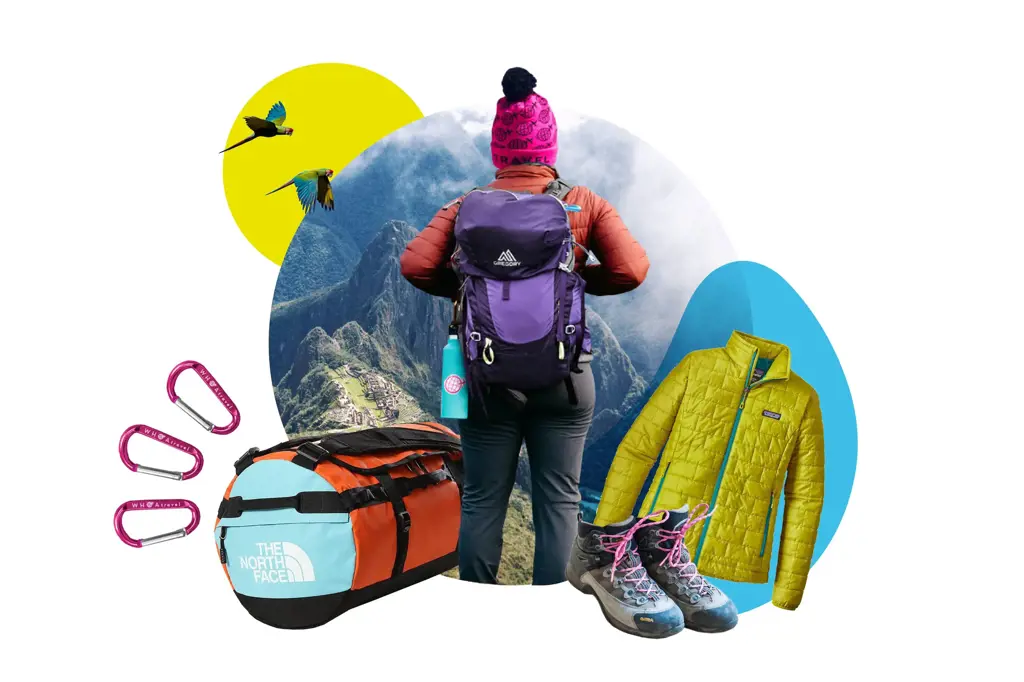
Are you planning a trip to Peru? Congratulations, you are about to embark on an exciting adventure. Peru offers a rich cultural heritage, stunning landscapes, and ancient ruins that will leave you in awe. However, before you embark on your journey, it is essential to pack the right items to ensure a comfortable and enjoyable trip. In this article, we will discuss the essential items you need to pack for a trip to Peru.
- Clothing: Peru has a diverse climate, ranging from the tropical Amazon rainforest to the high altitude of the Andes Mountains. Therefore, it is important to pack a variety of clothing options to accommodate these varying temperatures. For the coastal regions and lowlands, pack lightweight and breathable clothing such as t-shirts, shorts, and swimsuits. If you plan to visit the highlands, bring warm and layerable items such as long-sleeve shirts, sweaters, and jackets.
- Comfortable Footwear: Peru offers numerous opportunities for hiking and exploring, so comfortable footwear is a must. Pack a pair of sturdy walking shoes or hiking boots that provide good support. It is also a good idea to bring a pair of sandals or flip-flops for relaxing at the beach or walking around in hot and humid areas.
- Travel Adapter: In Peru, the power outlets are typically type A and type C, with a standard voltage of 220 V. Make sure to bring a travel adapter so that you can charge your electronics and keep them powered throughout your trip.
- Medications and First Aid Kit: It is always advisable to carry a small first aid kit with essential items such as band-aids, antiseptic ointment, pain relievers, and any prescription medications you may require. While there are pharmacies available in Peru, it is better to be prepared for any minor medical issues that may arise during your trip.
- Insect Repellent: Peru is home to various insects, including mosquitos that can transmit diseases such as malaria and dengue fever. Protect yourself by packing a reliable insect repellent with a high concentration of DEET. It is also a good idea to wear lightweight, long-sleeve shirts and long pants when visiting areas with a high mosquito population, especially during dawn and dusk.
- Sun Protection: The sun in Peru can be intense, so it is important to pack sun protection items. These include sunscreen with a high SPF, sunglasses, a wide-brimmed hat, and lightweight clothing that covers your arms and legs. Don't forget to reapply sunscreen regularly, especially when visiting high-altitude areas where the sun's rays are stronger.
- Travel Documents and Money: Don't forget to pack your passport, visas (if required), and any other necessary travel documents. It is advisable to keep photocopies of these documents in a separate place in case of loss or theft. Additionally, ensure you have enough local currency (Peruvian Soles) and a backup credit card for emergencies.
- Waterproof Gear: If you plan to visit the Amazon rainforest or engage in water-based activities such as kayaking or rafting, pack waterproof gear such as a rain jacket, waterproof bag, and waterproof sandals. This will protect your belongings from getting wet and ensure your comfort during these adventures.
- Snacks and Water Bottle: While Peru has many delicious and affordable food options, it is a good idea to pack some snacks for long bus rides or hikes. Bring energy bars, nuts, and dried fruits to keep yourself fueled. Additionally, carrying a reusable water bottle is essential as it will help you stay hydrated and reduce plastic waste.
- Camera and Binoculars: Peru offers breathtaking landscapes and diverse wildlife, so don't forget to pack a camera to capture those memorable moments. If you are interested in birdwatching or wildlife spotting, also consider bringing a pair of binoculars for a closer look.
Remember to check the weather forecast for the regions you plan to visit in Peru so that you can pack accordingly. Packing the right items will ensure you have a comfortable and enjoyable trip to Peru, allowing you to fully immerse yourself in the beauty of this incredible country.
The Ultimate Packing List for Your Epic Vegas Trip
You may want to see also

Are there any specific clothing items that should be packed for different regions or climates in Peru?
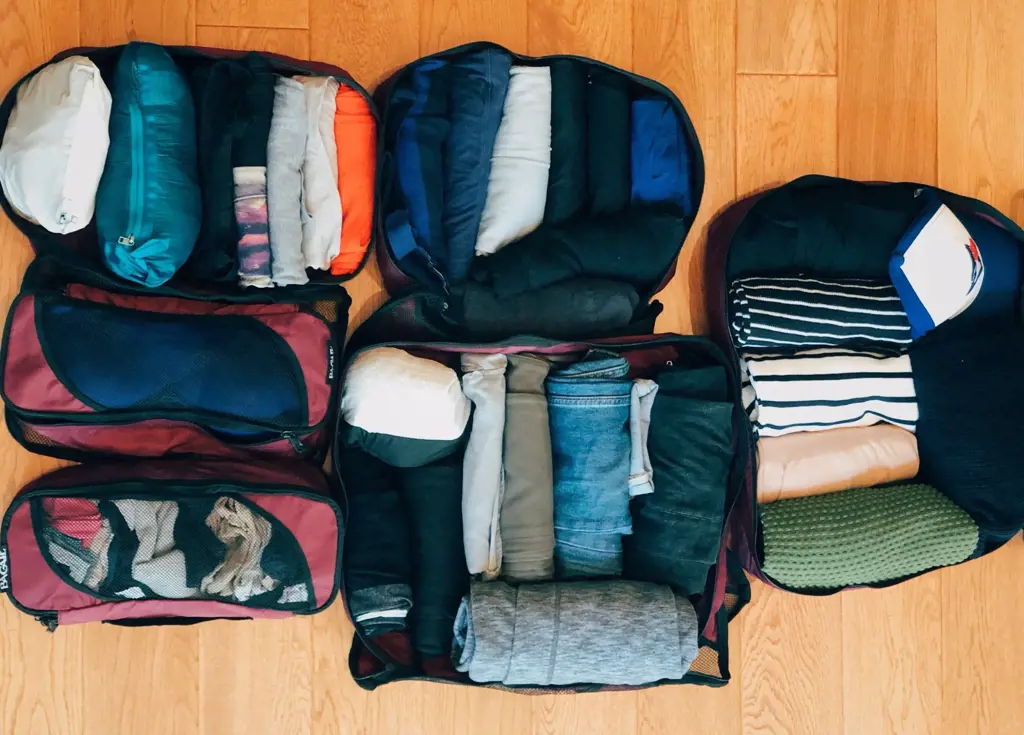
When traveling to different regions or climates in Peru, it is important to pack the appropriate clothing items to ensure comfort and protection from the elements. Peru has diverse weather patterns due to its varied geography, ranging from coastal deserts to high mountain ranges and tropical rainforests. Here are some specific clothing items to consider packing for different regions or climates in Peru:
Coastal Regions:
- Lightweight, breathable clothing: The coastal regions, including cities like Lima and Trujillo, have a warm and humid climate. It is advisable to pack lightweight and breathable clothing made of natural fibers like cotton or linen to stay cool and comfortable.
- Sunhat and sunglasses: The coastal areas can get very sunny, so it's important to protect yourself from the strong UV rays. A wide-brimmed hat and sunglasses are essential to shield your face and eyes from the sun.
- Swimwear: Many coastal towns in Peru have beautiful beaches, so don't forget to pack your swimsuit if you plan on taking a dip in the Pacific Ocean.
Andean Highlands:
- Layered clothing: The high-altitude regions of Peru, such as Cusco and Arequipa, can have varying weather conditions throughout the day. It is recommended to dress in layers to adapt to the temperature changes. Start with a lightweight base layer, add a fleece or sweater for insulation, and top it off with a waterproof and windproof jacket.
- Thermal undergarments: The Andean highlands can get quite cold, especially at night. Packing thermal undergarments will help keep you warm and comfortable.
- Hat, gloves, and scarf: Be prepared for chilly winds in the mountains by packing a warm hat, gloves, and a scarf to protect your extremities from the cold.
Amazon Rainforest:
- Lightweight, quick-drying clothing: The Amazon rainforest in Peru is hot, humid, and prone to rain. Pack lightweight and quick-drying clothing made of moisture-wicking materials like nylon or polyester to keep cool and dry in the humid environment.
- Long-sleeved shirts and pants: These will help protect you from mosquitoes, ticks, and other insects that can be found in the rainforest. Opt for light colors as they are less attractive to bugs.
- Closed-toe shoes or boots: Sturdy and comfortable closed-toe shoes or boots are a must for trekking and exploring the Amazon rainforest. They will provide protection against slippery surfaces, insect bites, and thorny plants.
It is important to note that Peru's weather can vary throughout the year, so it is recommended to check the weather forecast for the specific regions you will be visiting and pack accordingly. Additionally, consider packing a small backpack to carry essential items like water, snacks, and a light rain jacket when exploring outdoor areas in Peru. Remember to always dress in comfortable clothing and wear appropriate footwear to fully enjoy your adventures in Peru's diverse landscapes.
Your Essential Packing List for a Trip to Colorado
You may want to see also

What documents or paperwork should I bring with me when traveling to Peru?
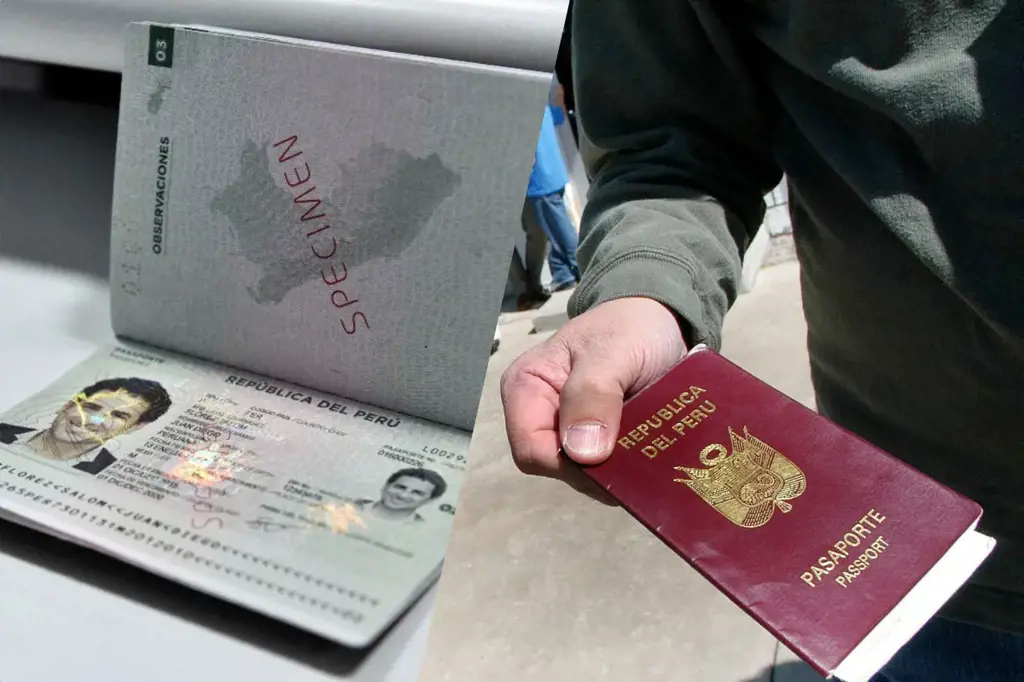
When traveling to Peru, it is important to make sure you have all the necessary documents and paperwork in order to ensure a smooth and hassle-free trip. Here is a list of essential documents that you should bring with you when traveling to Peru:
- Valid Passport: Your passport must be valid for at least six months beyond your intended departure date from Peru. Make sure to check the expiration date before your trip and renew it if necessary.
- Tourist Visa: Citizens of most countries, including the United States, Canada, and European Union countries, do not require a tourist visa for stays of up to 183 days. However, it is always a good idea to check with the Peruvian embassy or consulate in your country to confirm the visa requirements.
- Travel Insurance: It is highly recommended to purchase travel insurance before traveling to Peru. This will provide coverage for any unexpected medical expenses, trip cancellations, or lost luggage.
- Flight Tickets: Make sure to have a printed or digital copy of your flight tickets for both your arrival and departure from Peru. This will be required when checking-in at the airport.
- Itinerary: Having a detailed travel itinerary can be useful for border control officers and hotel bookings. Include information about your accommodations, transportation plans, and the places you plan to visit.
- Vaccination Certificates: Depending on your country of origin, you may be required to provide proof of certain vaccinations, such as yellow fever. Check the current vaccination requirements before traveling and carry any necessary certificates with you.
- Credit Cards and Cash: Bring a mix of credit cards and some local currency (Peruvian Soles) for your trip. While credit cards are widely accepted in tourist areas, it is a good idea to have some cash for smaller establishments or in case of emergencies.
- International Driver's License: If you plan on renting a car during your trip, make sure to bring your international driver's license. This will help you avoid any issues when renting a vehicle and driving in Peru.
- Contact Information: Carry a list of important phone numbers and addresses, including your embassy or consulate in Peru. In case of an emergency or lost documents, this information will be invaluable.
- Travel Documents Organizer: It can be helpful to have a travel documents organizer or folder to keep all your important paperwork organized and easily accessible. This ensures that you have everything you need at hand and minimizes the chances of losing important documents.
Remember to make extra copies of all your important documents and keep them in a separate location, such as your luggage or with a trusted friend or family member. This way, if your documents are lost or stolen, you have backup copies to rely on.
By ensuring that you have all the necessary documents and paperwork before traveling to Peru, you can have a stress-free and enjoyable trip. It is recommended to check the official government websites or consult with travel experts for the most up-to-date information. Safe travels!
The Ultimate Guide to Packing for Alaska in August
You may want to see also

Are there any items or supplies that I should bring for outdoor activities or hiking in Peru?
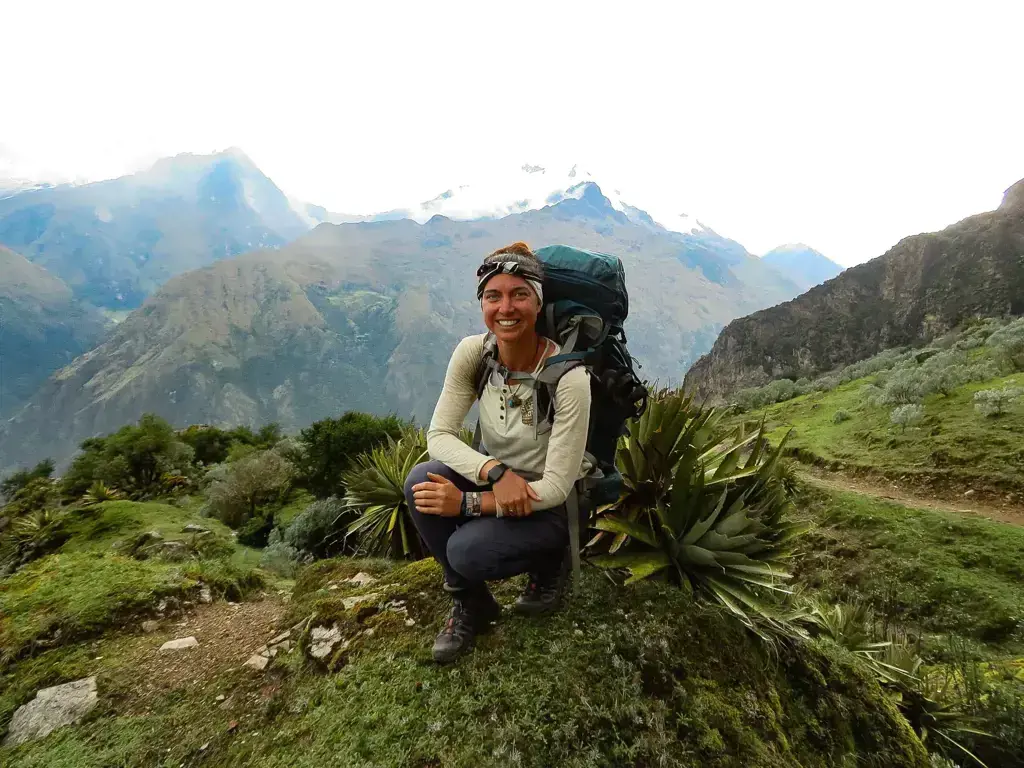
If you are planning to partake in outdoor activities or hiking in Peru, it is important to come prepared with the necessary items and supplies. The diverse landscapes and challenging terrains of Peru require specific gear to ensure a safe and enjoyable experience. Whether you are embarking on a multi-day trek through the Andes or exploring the Amazon rainforest, here are some essential items to bring with you:
- Sturdy Hiking Boots: A good pair of hiking boots with ankle support is crucial for traversing the uneven and rocky terrains of Peru. Make sure your boots are broken in before your trip to avoid blisters and discomfort.
- Moisture-Wicking Clothing: Peru's climate can vary greatly depending on the region and altitude. It is important to bring moisture-wicking clothing that will keep you dry and comfortable during physical activities. Layering is key, as temperatures can fluctuate throughout the day.
- Waterproof Jacket: Rain showers are common in Peru, especially in the Andes and rainforest regions. A waterproof jacket will keep you dry and protected from the elements. Look for one that is lightweight and breathable.
- Sun Protection: Peru's high altitude and proximity to the equator make it crucial to protect yourself from the sun's intense rays. Bring a wide-brimmed hat, sunglasses, and sunscreen with a high SPF.
- Map and Compass: While most popular hiking trails in Peru are well-marked, it is always a good idea to carry a map and compass as a backup. These tools can help you navigate in case of unexpected detours or getting lost.
- First Aid Kit: It is essential to have a well-stocked first aid kit with you. Include band-aids, antiseptic ointment, blister pads, pain relievers, and any necessary prescription medications.
- Water Purification: Depending on the region, the availability of safe drinking water can be limited in Peru. Carry a water purification system such as water filters, purification tablets, or a portable water bottle with a built-in filter to ensure safe hydration.
- Camping Gear: If you plan on camping during your outdoor adventures, bring a lightweight tent, sleeping bag, and a camping stove. These items will provide shelter and warmth during overnight stays.
- Insect Repellent: Peru is home to various insects and mosquitoes, especially in the Amazon rainforest. Apply insect repellent with a high concentration of DEET to protect yourself from bites and potential diseases like malaria or dengue fever.
- Snacks and Water: Always carry enough snacks and water to last you through your outdoor activities. Pack energy bars, nuts, dried fruits, and electrolyte-rich drinks to keep your energy levels up.
Remember to pack these items in a sturdy and comfortable backpack that distributes weight evenly. Additionally, be mindful of the weight restrictions set by your airline if you are flying into Peru. It is also important to acclimate yourself to higher altitudes gradually to avoid altitude sickness. Take your time, stay hydrated, and listen to your body.
In conclusion, outdoor activities and hiking in Peru offer stunning natural beauty and unique experiences. By packing the right gear and supplies, you can make the most of your adventures and ensure a safe and enjoyable journey.
The Essential Packing List for a 7-Day Cruise
You may want to see also

Are there any specific toiletries or medications that should be packed for a trip to Peru?
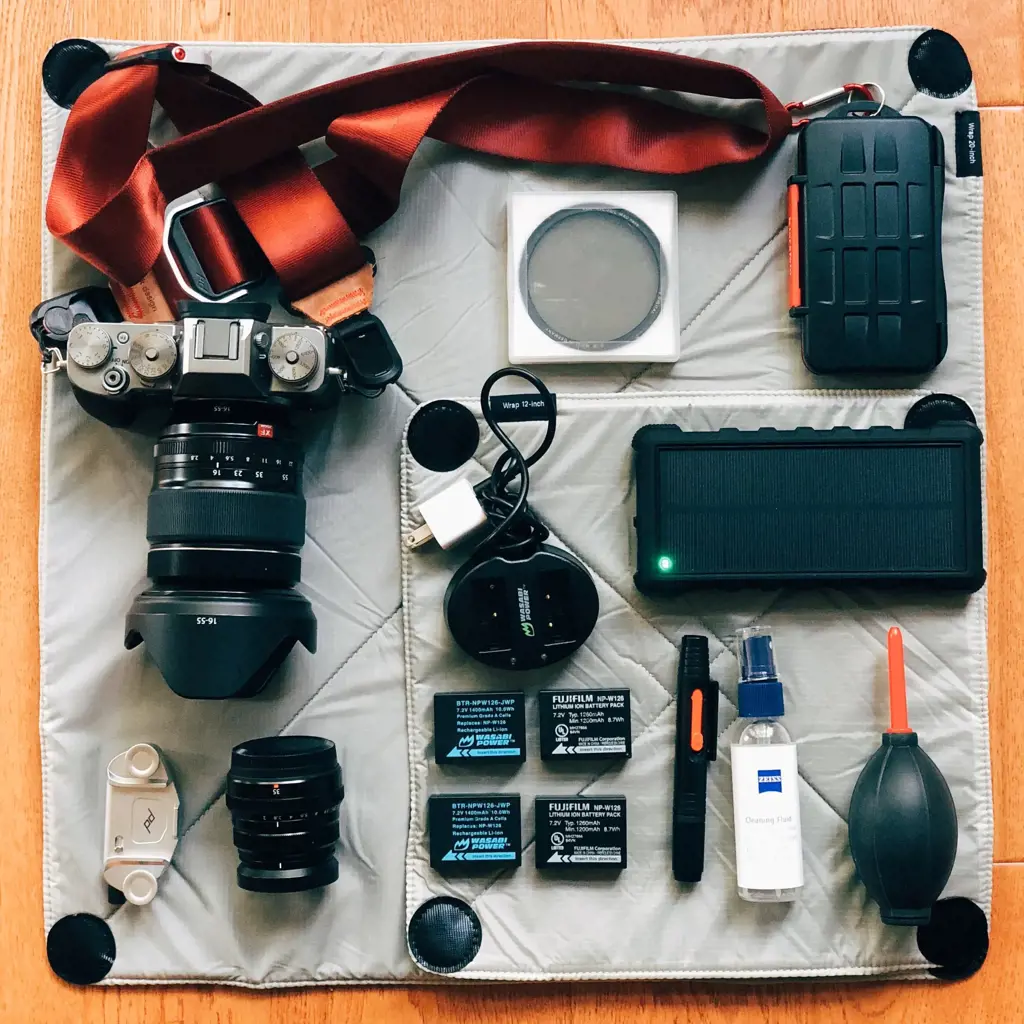
When planning a trip to Peru, it's important to pack the necessary toiletries and medications to ensure a comfortable and enjoyable journey. In addition to the usual items like toothbrush, toothpaste, and shampoo, there are a few specific items that might be useful to have on hand in Peru. Here are some recommendations for toiletries and medications to pack:
- Sunscreen: Peru is known for its sunny weather, and whether you are exploring the bustling streets of Lima or hiking up to Machu Picchu, you'll want to protect your skin from the strong UV rays. Choose a sunscreen with a high SPF and apply it liberally before heading outdoors.
- Insect repellent: Peru is home to mosquitoes and other insects that can carry diseases such as dengue fever and Zika virus. To protect yourself from bites, it's advisable to bring a strong insect repellent containing DEET or picaridin. Apply it to exposed skin and reapply as needed, especially in the evenings when mosquitoes are most active.
- Altitude sickness medication: If you are planning to visit high-altitude destinations like Cusco or Lake Titicaca, you may experience symptoms of altitude sickness. To alleviate these symptoms, it can be helpful to pack medication such as acetazolamide (Diamox), which can help your body adjust to the altitude. It's recommended to consult with your doctor before taking any medication.
- Diarrhea medication: Travelers' diarrhea is a common issue in Peru, particularly if you are not accustomed to the local cuisine. To be prepared, consider packing over-the-counter medication such as loperamide (Imodium) to provide relief from diarrhea symptoms. It's also important to stay hydrated and avoid consuming food and water from unreliable sources.
- Motion sickness medication: If you plan on taking long bus rides or touring the winding roads of the Andes, you might want to have motion sickness medication on hand. Medications such as dimenhydrinate (Dramamine) or meclizine (Bonine) can help prevent or alleviate symptoms of motion sickness.
- Prescription medications: If you take any prescription medications, make sure to pack an adequate supply for the duration of your trip. It's also a good idea to carry a copy of your prescription or a note from your doctor, in case you need to refill your medication while in Peru. Keep medications in their original packaging to avoid any issues with customs.
- First aid kit: It's always wise to have a basic first aid kit with you when traveling. Include items such as band-aids, antiseptic ointment, pain relievers, and any specific medications or supplies you may need for pre-existing conditions. You never know when you might need them, and it's better to be prepared.
While these items are recommended for a trip to Peru, it's important to note that everyone's needs may vary. Consult with your healthcare provider for personalized advice based on your health, destination, and planned activities. By packing the right toiletries and medications, you can ensure a worry-free and enjoyable trip to Peru.
The Essential Food Packing Guide for the Ozark Highlands Trail
You may want to see also
Frequently asked questions
When packing for Peru, it's important to be prepared for a variety of climates. In the coastal regions such as Lima, it can get quite hot, so pack lightweight and breathable clothing such as shorts, t-shirts, and dresses. In the highland regions like Cusco and Machu Picchu, the temperature can drop significantly, especially at night, so it's essential to pack warm layers such as sweaters, jackets, and thermals. It's also a good idea to bring a rain jacket or poncho as Peru experiences periodic rain showers.
Peru offers a range of activities and terrains, so it's important to have appropriate footwear. In cities and coastal areas, comfortable walking shoes or sandals are sufficient. However, if you plan on hiking or exploring the mountainous regions, sturdy hiking boots are recommended. The terrain can be rocky and uneven, so having footwear with good traction and ankle support is essential for your safety and comfort.
It's always a good idea to pack a small first aid kit with basic medications such as pain relievers, antihistamines, and stomach remedies. Altitude sickness is common in the highland areas of Peru, so you may want to consult your doctor about medication specifically for this condition. If you have any pre-existing health conditions, make sure to bring an ample supply of any necessary medications as they might not be readily available in every location.
In addition to the basics, such as clothing and toiletries, there are a few other essential items to consider. A good quality sunscreen with a high SPF is important as the UV rays can be intense, especially at high altitudes. It's also a good idea to pack a portable water bottle and a water purification system, as it's not advisable to drink tap water in Peru. A power adapter is crucial if you plan on using any electronic devices, as Peru uses both two-pronged and three-pronged outlets. Lastly, don't forget your camera to capture the incredible landscapes and cultural experiences.


